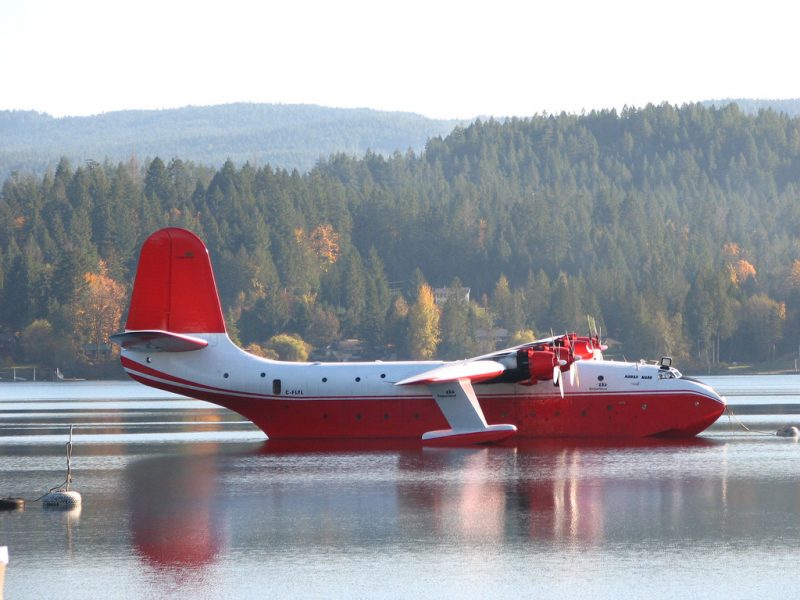The arrangement between the Pensacola Naval Museum and the Coulson Group for the transfer of the Mars Water Bomber, Philippine, has been put on hold for at least the next twelve months, said CEO of the Coulson group, Wayne Coulson. “Because of the [U.S.] general election coming, and the concern that there’s going to be a change in government, all projects of this like and manner have been put on hold for at least a year.”
The Philippine was one of four Mars bombers which the Glenn L. Martin Company constructed for the U.S. Navy. They were intended for use during World War II. After the war two of the bombers, the Hawaii, and Philippine were bought by Flying Tankers, a consortium of forestry-based companies. In 1959 they were flown to British Columbia where they were outfitted with 27,000-litre water tanks for fighting wildfires. The water bombers were later sold, in 2007, to the Coulson Group and docked at Coulson Flying Tankers base on Sproat Lake.
In 2012, the Philippine was retired from active service as it was not in use fighting fires while her sister aircraft, the Hawaii, has been in extensive service fighting fires. On 2nd August 2015, the Hawaii set a new British Columbia record for the most water dropped on a fire in an hour. 108,000 litres were dropped in an hour on a fire near Harrison Lake.
Five years ago the Coulson Group began negotiation with Pensacola to trade the Philippine for two C-130 Hercules planes. Eight smaller aircraft were also included in the discussions, with the plan to overhaul and sell them. In return, the Philippine was stripped of its distinctive red and white paint scheme and repainted to look as it would have when doing service for the US Airforce during WWII.
Unfortunately this deal seems to have hit an obstacle, but the aircraft will remain at the Coulson Group base, and Wayne Coulson was at pains to point out that the aircraft was still a valuable asset. “From our perspective, because we’ve been working on this for five years, and we’ve had enquiries over time, we’re going to go and move the aircraft in whatever way makes sense,” said Coulson.
“At the end of the day, if it makes sense to work with [the naval museum] a year from now then we’ll do it, but if there are other people out there that would like to acquire the aircraft, then we’ll move it to them.”
